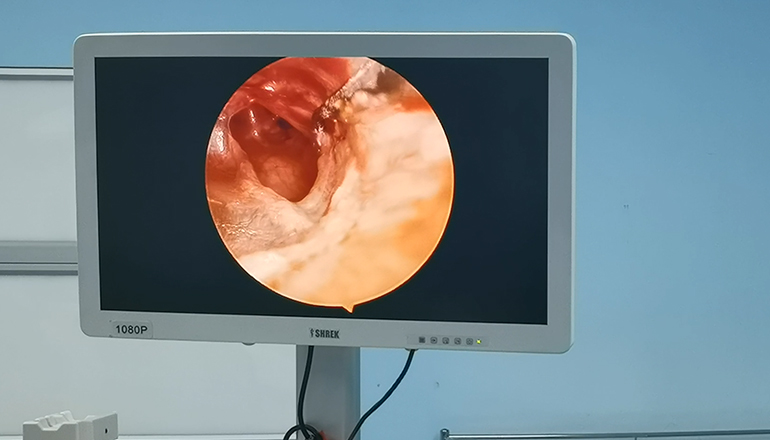- Shanghai, China
- [email protected]
- +86-21-58189111
Endoscopes have revolutionized the field of otolaryngology (ENT), providing surgeons with a less invasive means of examining and operating on the ear, nose, and throat. Endoscopic technology allows for a detailed, close-up view of the internal structures of the head and neck, enabling surgeons to perform procedures with greater precision and accuracy. Here are some of the ways that endoscopes are used in ENT operations:
Sinus surgery: Endoscopes are commonly used in sinus surgery to visualize the sinuses and remove obstructions, such as polyps or cysts, that can cause chronic sinusitis. The endoscope provides a magnified view of the nasal passages, allowing the surgeon to identify and remove tissue or bone that may be blocking the sinuses.
Tonsillectomy: Endoscopic tonsillectomy is a minimally invasive alternative to traditional tonsillectomy surgery. An endoscope is used to guide the surgeon to the tonsils and adenoids, allowing for more precise removal of the tissue. Endoscopic tonsillectomy typically results in less post-operative pain and a faster recovery time compared to traditional tonsillectomy.

Laryngoscopy: Endoscopes are used to examine the larynx (voice box) and vocal cords. This procedure can be performed in the office and can help diagnose conditions such as vocal cord nodules, polyps, or cancer. The endoscope is inserted through the nose or mouth and advanced to the larynx, allowing the surgeon to visualize the structures in real-time.
Ear surgery: Endoscopes can be used to perform ear surgeries such as myringotomy (ear tube placement) and stapedectomy (removal of the stapes bone in the middle ear). The endoscope is inserted through the ear canal, providing the surgeon with a detailed view of the ear structures. This technique is less invasive than traditional ear surgery and can result in less scarring and a faster recovery time.
Salivary gland surgery: Endoscopes are used in salivary gland surgery to remove stones or masses that may be obstructing the salivary ducts. The endoscope provides a magnified view of the gland and ducts, allowing the surgeon to precisely remove the obstruction while preserving the surrounding tissue.
Overall, endoscopes have greatly expanded the capabilities of ENT surgeons by providing a minimally invasive means of examining and operating on the head and neck. Endoscopic technology has significantly improved patient outcomes and has allowed for faster recovery times and reduced post-operative pain.
Leave a Comments